Discover the step-by-step process to efficiently adjust your garage door cable tension for optimal performance.
Adjusting garage door cable tension is a common maintenance task that ensures smooth operation and prolongs the lifespan of your garage door. This article provides a detailed, step-by-step guide on how to safely and effectively adjust the cable tension on your garage door.
Whether your door is struggling to open, making unusual noises, or just not operating as smoothly as it once did, this guide will walk you through the process of identifying and resolving cable tension issues.
The process can be completed in a few simple steps, using tools you likely already have in your garage. Stay tuned for a comprehensive solution to your garage door cable tension concerns.
Key takeaways:
- Garage door cables are crucial for smooth operation.
- Implement safety precautions before adjusting the cables.
- Release the garage door from the track before making adjustments.
- Assess the current cable tension and check for any issues.
- Follow the proper process for adjusting the garage door cables.
Understanding Garage Door Cable Function
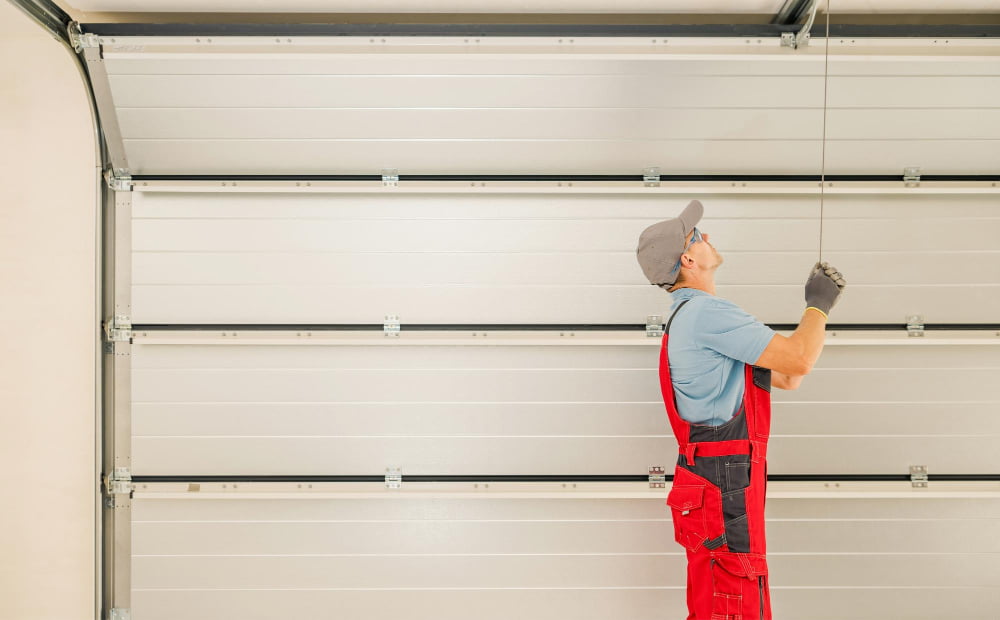
Garage door cables are a crucial component of the whole system. They work in unison with the springs to facilitate the smooth opening and closing of the garage door.
When you activate the garage door opener, the tension springs counterbalance the weight of the door, and the cables assist by bearing the load, ensuring a seamless operation.
A balanced cable tension guarantees a secure and efficient garage door, reducing the risk of damage or undue strain on the system. Too loose or too tight, and your garage door might not function properly, making regular checks and adjustments necessary.
Implementing Safety Precautions Before Adjustment
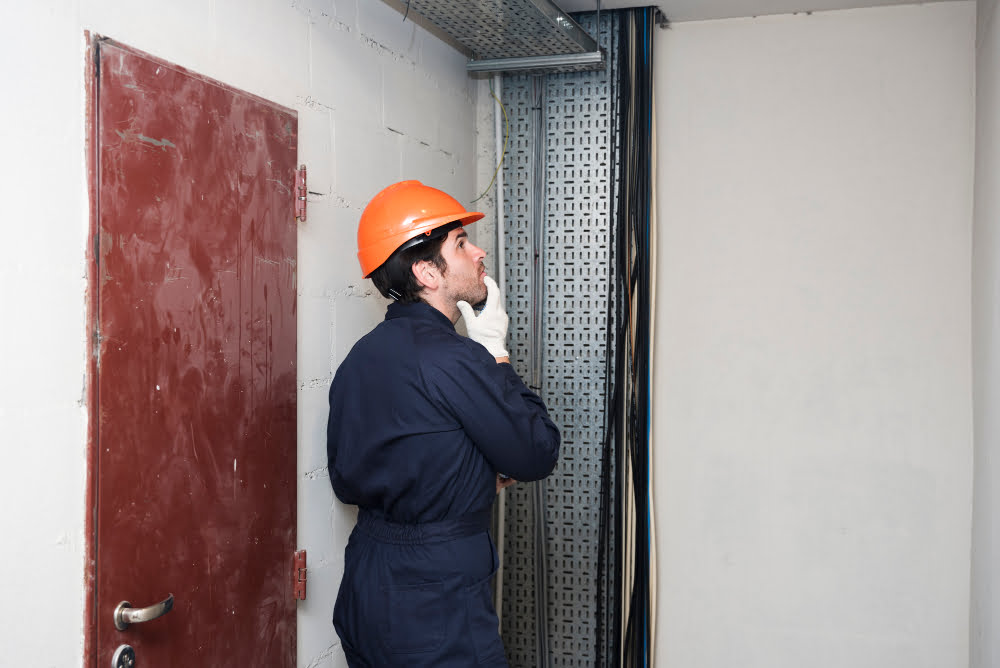
Your safety should be a top consideration when handling any garage repair. Start by unplugging the garage door opener lest it activates unintentionally. Next, protect your hands with a pair of work gloves because garage door cables can be harmful when handled without caution.
Dispose of any nearby objects that may pose a trip hazard while you’re at work. Consider wearing eye protection, especially while dealing with tension parts. Lastly, do not embark on this task without a firm, sturdy ladder to reach the necessary components securely. If the scope of the project appears too daunting, do not hesitate to consult a professional.
Releasing the Garage Door From the Track

Begin by closing the garage door and disconnecting the power from the automatic opener. This prevents any unwanted, automatic movements during the adjustment process.
Once done, locate the tension springs – these are usually found parallel to the overhead tracks. Carefully, with a firm grip, use a durable, metal rod to wedge into the adjustment hole of the tension spring.
Turn the rod slowly to release the spring, thus drawing the garage door off the track. Remember to keep your body and face away from the rod to avoid any injury if the spring snaps back.
This allows easier access to the cables and prepares the door for adjustments.
Assessing Current Cable Tension
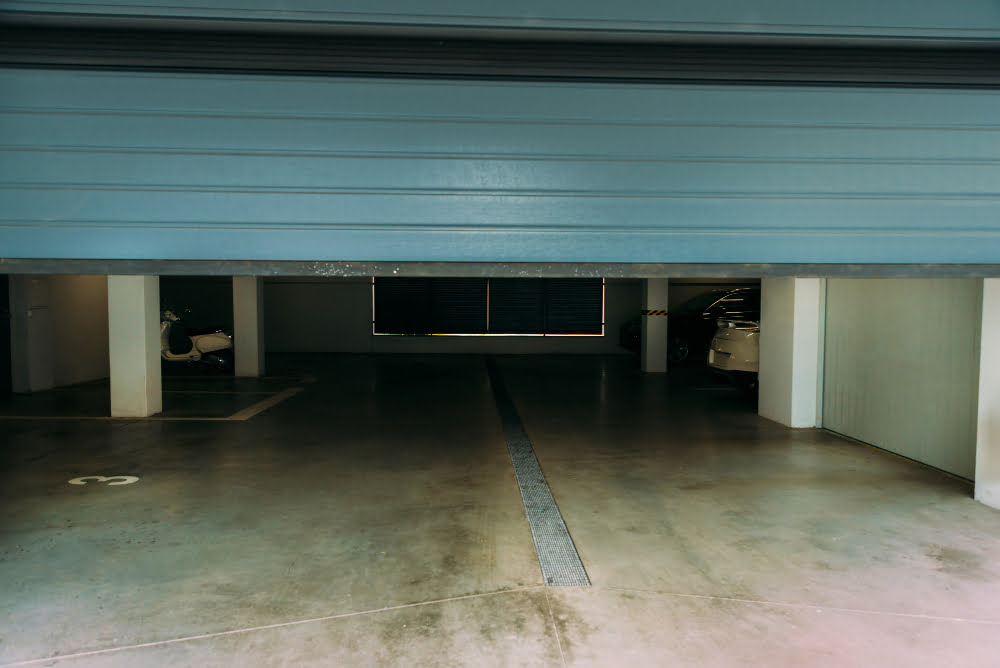
To assess the current cable tension, start by closing the garage door. Then, visually inspect the cables for any signs of slack or fraying. Touch the cables to ensure they’re not too loose or too tight; they should feel taut but not overstretched. Take note of how the door behaves as it moves. Excessive movement or shaking could indicate an issue with the tension in your cables. Be sure to remember the initial state of the wires before any adjustments are made, as this will serve as your reference point throughout this process.
The Role of Positioning Cables Correctly
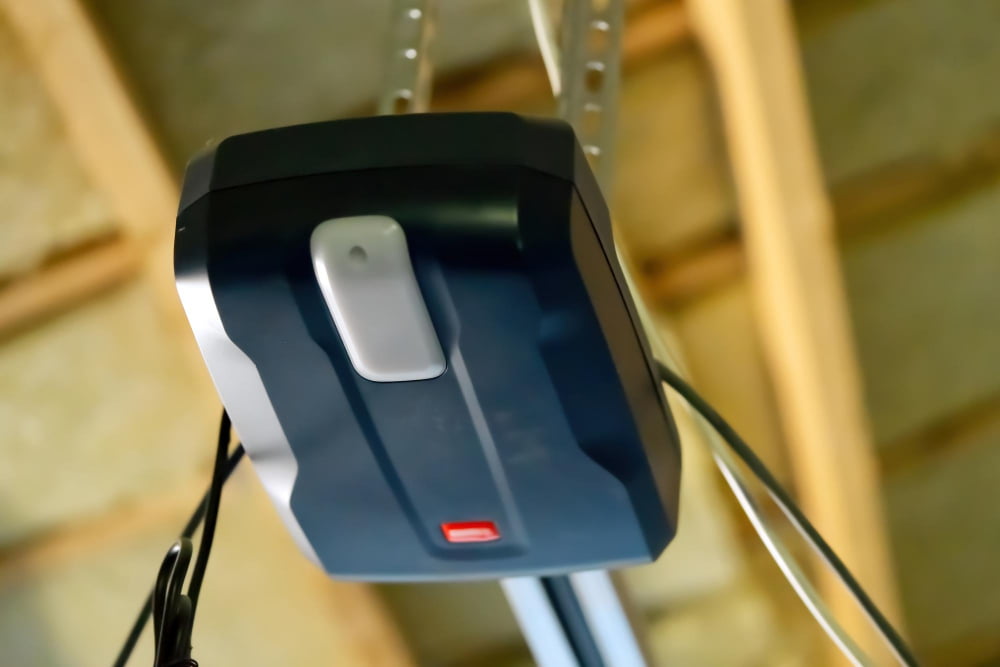
Correct cable positioning plays a crucial part in the overall functionality of your garage door. Ideally, the cables should run parallel to the garage door tracks, ensuring smooth and undeterred operation. When properly placed, they apply equal force on both sides of the door, allowing it to rise and descend evenly.
Any deviation in this parallel structure can cause one side of the door to move faster than the other, leading to potential damage or misalignment. With regular use, cables can stretch or become loose, altering their alignment and thus affecting door operation.
The importance of checking cable position cannot be overstated, and must be a part of any garage door maintenance routine. A keen eye for symmetry, a precision for balance, and a careful hand during adjustments are key to making sure your garage door operates as smoothly as possible.
Remember to consistently check for signs of fraying or wear in your cable as well, as these can lead to weakened performance and may require replacement rather than simple adjustments. Regular inspection and maintenance will keep your garage door in optimal working condition for years to come.
The Process of Adjusting Garage Door Cables
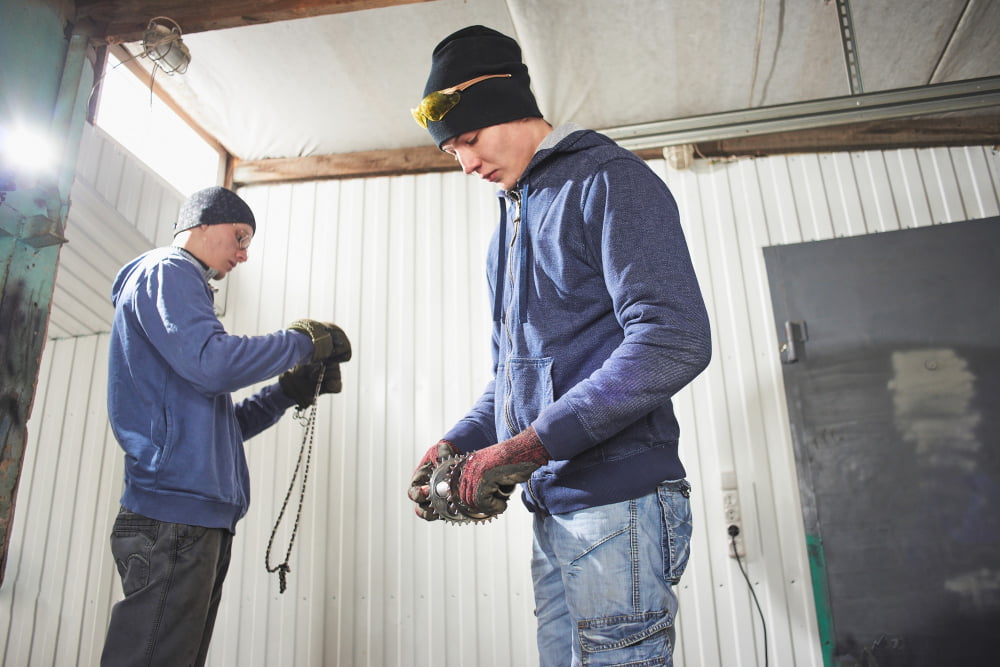
Initiate the process by loosening the set screws on the drum with a wrench, taking extra precautions not to completely remove the screws. Subsequently, delicately adjust the garage door cable. The goal here is to achieve just enough slack that you can comfortably move the cable back and forth in its drum slot.
Next, rotate the drum. If the door has been lifted off the floor, observe whether it maintains balance. If it does, carefully tighten the screws on the drum until they are firmly in place.
Remember that the cable should not be loose, as it should maintain a solid grip between the drum and the wall. However, do not over-tighten the cable as this could lead to eventual snapping or wear and tear.
Once completed, shift your attention to the other side of the door and use the same approach to balance the tension of the second cable. The key to successful adjustment is maintaining equal tension on both cables. Unequal tension may lead to the door jamming or tilting to one side. Carefully executed and tested steps can avoid these hitches.
Crosschecking Adjustments for Consistency

The importance of evenness and balance in your garage door’s operation can’t be overstated. Always ensure your adjustments are consistent on both sides of the door.
1. Start by measuring from a fixed point on the door to the cable drum. Take note of the measurement.
2. Proceed with the same measurement on the other side and compare the two. They should be identical.
3. Look for uneven gaps along the garage door. For instance, pay attention to the space between the door and the floor, or the door and the tracks. Irregularities in these areas may signal uneven cable tension.
4. Address any detected disparities immediately, re-adjusting as needed. The action may involve a single rotation of the drum or a slight movement of the cable.
Remember, consistency is key for smooth operation and longevity of your garage door.
Testing Post-Adjustment Cable Tension
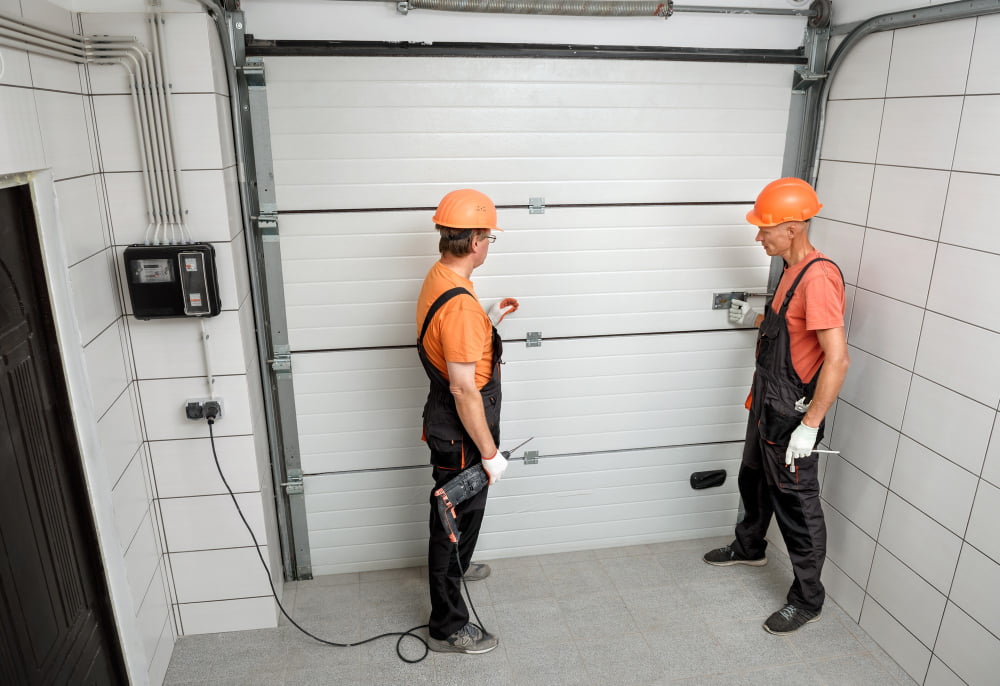
Done with the adjustment, it’s time to test and ensure proper tension. Follow these steps carefully;
1. Close the Garage Door: The first step involves manually closing the garage door. Observe the movement; it should run smoothly.
2. Check for any Slack: Look closely at the cables. There should be no visible slack. However, they shouldn’t be exceedingly tight either. The right balance is the goal here.
3. Open the Door Halfway: Try opening the door halfway and observe. If the tension is adequate, the door will stay put without any form of support. If it slides down or jumps up, readjustments might be needed.
4. Listen for Unusual Sounds: While closing or opening the door, listen keenly for any unusual sounds such as squeaking or grinding. These could indicate problems with the tension or other parts of the garage door mechanism.
This checking process is crucial to ensure that any adjustments made are effective. If there are still issues, it may be worth considering getting a professional to take a look to prevent any future problems.
Performing a Final Assessment of Your Handiwork
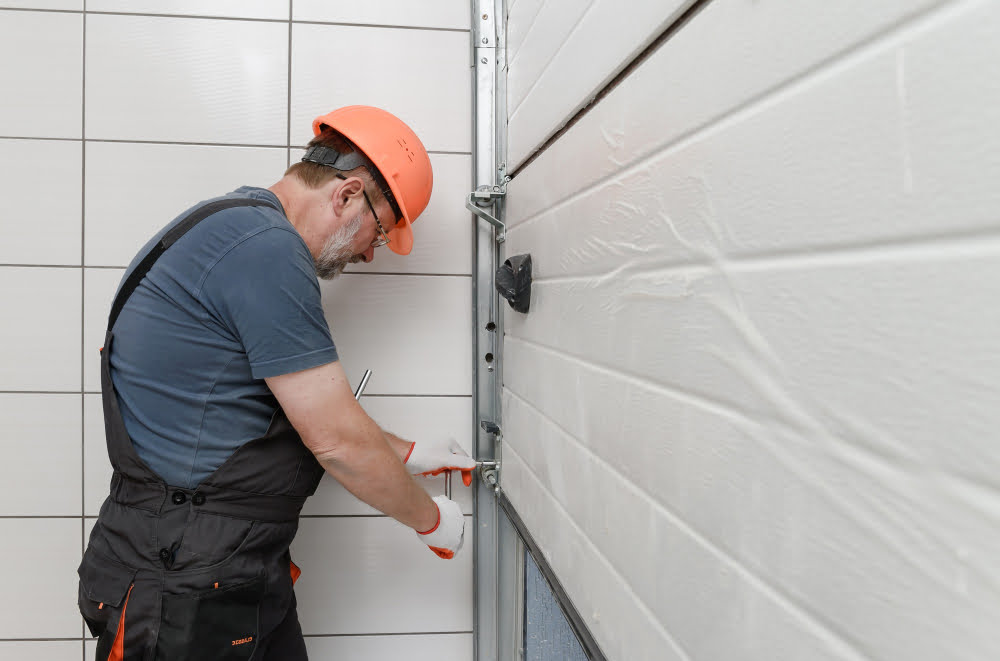
With adjustments completed, it’s time to critically observe the behavior of your garage door. Check the door’s balance by disconnecting it from the opener and manually moving it halfway up the track. It should stay in place, not soaring upwards or plummeting downwards as this could indicate an over-adjustment or under-adjustment, respectively.
Next, examine the cables on both sides. They should mirror each other in terms of tensioning and positioning, ensuring symmetrical operation. Differing tensions can cause the door to lurch or jerk – signalling errors requiring further adjustment.
Lastly, listen to your garage door during operation. Ideally, you shouldn’t hear any squeaking or straining. Such sounds might suggest that the cables are too tight or not lubricated enough. Again, this would merit further investigation and possible adjustment.
Remember, the goal of this final assessment is to ensure the adjustments have improved, not impaired, your garage door’s functionality. Making minor adjustments over time can greatly extend the lifespan of your garage door, improving safety, and ensuring smooth operation.
FAQ
Why does my garage door cable keep unwinding?
Your garage door cable could be unwinding due to an improperly tensioned spring that is either too weak or too strong, leading to the cables jumping off the drum or unwinding respectively.
How do you adjust the tension on a roll up garage door spring?
To adjust the tension on a roll-up garage door spring, with the door open, insert a standard 5/16 Allen wrench into the exposed drive, turn it clockwise to reduce tension or counter-clockwise to increase it, and if utilizing a drill attachment, ensure it’s set to a variable low speed.
How can you tell if the garage door cable tension needs adjusting?
If the garage door isn’t opening or closing smoothly, or it slams shut or raises too quickly, it likely indicates the garage door cable tension needs adjusting.
Where are the tension springs located in a garage door assembly?
The tension springs in a garage door assembly are typically located either parallel to the horizontal tracks on each side (extension springs) or above the garage door (torsion springs).
What safety precautions should be taken while adjusting the tension of a garage door cable?
When adjusting the tension of a garage door cable, one should disconnect the garage door opener, wear protective gloves, and use appropriate tools to avoid injury from high-tension components.